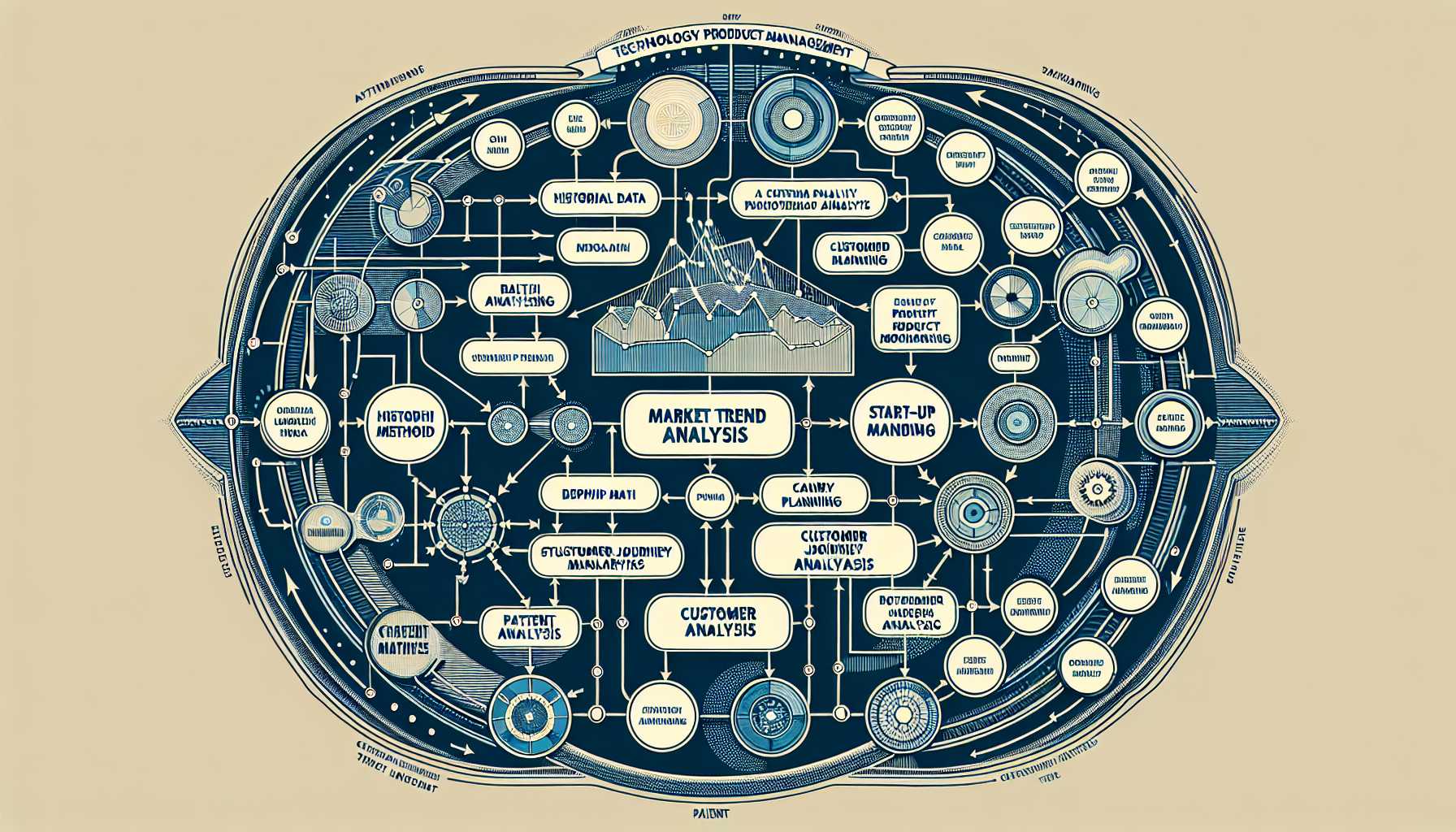Welcome, seasoned product managers! Our journey through the tech industry is fraught with rapid innovations and shifting market sands. Today, I’d like to dive deep into the world of market trend analysis and forecasting—a critical aspect of our role as product leaders. Through these analyses, we can steer our products towards success by anticipating changes and adapting strategies accordingly. In this post, I will share techniques grounded in industry frameworks and enriched by my personal experiences in the tech trenches.
Understanding Market Trend Analysis
First, let’s deconstruct market trend analysis. At its core, it involves identifying patterns and movements within your industry that could impact your product’s performance in the short and long term. These trends could be technological advances, regulatory changes, shifts in consumer behavior, or competitive dynamics.
Techniques for Market Trend Analysis
I have found several techniques crucial in effectively understanding and predicting market trends. Let’s explore them:
1. Leveraging Historical Data
Historical data is the compass guiding us through the ambiguities of the market. It is where I often begin when analyzing trends. Utilizing metrics like sales volume, customer acquisition costs, and churn rates over time can help you identify patterns and cyclicality in the market.
Personal Experience: In a previous role, I leveraged historical sales data to identify a recurring pattern in product adoption rates. This insight enabled us to adjust our marketing and inventory strategies in anticipation of this cyclicality, smoothing revenue fluctuations and capitalizing on peak periods.
2. Delphi Method
The Delphi method involves collecting insights from a panel of experts and conducting several rounds of structured communication to build a consensus. It’s a method I’ve successfully employed to gather diverse perspectives that sharpen my understanding of potential market shifts.
Experience: Incorporating the Delphi method allowed my team to consolidate expert predictions on emerging technologies, which we then used to pivot our roadmap ahead of our competitors.
3. Scenario Planning
Scenario planning encourages us to think about various ‘what-if’ pathways. It prepares the team for different market eventualities by developing parallel strategies.
Experience: When a new regulation threatened to disrupt our go-to-market strategy, scenario planning facilitated a quick pivot. While competitors struggled to comply, our ‘plan B’ kept us ahead.
4. Monitoring Startups and Innovators
Startups often serve as the industry’s crystal ball, hinting at where technology and customer preferences are heading.
Tactical Approach: I make it a habit to attend industry pitch days and monitor startup accelerators. This approach once provided an early signal that AI was transforming customer service, leading us to integrate chatbots before it became an industry norm.
5. Customer Journey Analysis
The insights gathered from studying the customer journey can illuminate emerging needs and hesitation points, helping forecast where product enhancements or innovations may be required.
Practice: After conducting a deep-dive analysis of the customer journey, we discovered a need for greater personalization in our product experience. This led to the integration of AI-driven personalization features, which significantly improved user engagement and retention.
6. Patent Analysis
Analyzing patent filings provides clues about competitors’ future capabilities. This technique often gives you a glimpse into the R&D pipelines of leading players in the market.
Insight: Regular scans of patent filings unveiled a trend towards sustainable materials in hardware. Recognizing this early, our product team sourced eco-friendly materials for our new line of devices, which resonated well with our environmentally conscious customers.
The Role of Forecasting Tools
While human intuition and experience are invaluable, forecasting tools based on quantitative methods can greatly support your trend analysis. Advanced analytics, machine learning models, and artificial intelligence can digest massive amounts of data to predict trends with impressive accuracy.
These tools range from sophisticated software to platforms like Google Trends, which can provide quick insights into the popularity of search terms related to your product or industry.
Forecasting Pitfalls to Avoid
Over the years, I’ve also learned that forecasting is as much about avoiding mistakes as it is about applying the right techniques. Watch out for confirmation bias, where we favor data that supports our hypotheses. Keep an open mind, challenge your assumptions regularly, and solicit diverse opinions to counteract this bias.
Product managers must also beware of becoming too reliant on quantitative forecasting at the expense of qualitative analysis. Numbers can tell you what is happening, but conversations with customers, suppliers, and peers will tell you why.
To close, market trend analysis and forecasting are part art, part science. They require a mix of structured techniques, powerful tools, and the seasoned product manager’s sharp intuition. Keep learning, keep analyzing, and, most importantly, stay adaptable in the face of relentless change.
Until next time, keep forecasting and lead your products to thrive in the ever-evolving tech landscape!

